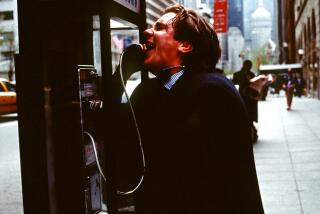Crowd-funding helps designers stand up, start up and sell
At 6 feet, 3 inches, Sam Carmichael was more comfortable standing than sitting at his office desk. But his standing desk broke soon after he got it, and higher-quality versions cost thousands. So after Carmichael became a student at the School of Visual Arts in New York, he collaborated with classmate Mikey Chen to create one.
In March, the pair uploaded a video for their UpStanding Desk onto crowd-funding platform Kickstarter, seeking an investment of $10,000. In four hours, they had it. Thirty days later, the students had banked more than $105,000 from 879 backers. Many investors contributed enough to get them a discounted desk; others earned smaller rewards. More than 750 are on a waiting list to receive the Canadian birch plywood desk.
âAnd we are starting to develop partnerships with start-ups, universities and chiropractors, as well as industrial partners abroad,â Carmichael said.
Before the birth of crowd-funding, new designers with great ideas often struggled to get their products financed. But the advent of sites such as Kickstarter, Indiegogo and RocketHub have changed not just how budding and established designers get their projects made but also how design aficionados locate the new must-haves.
How does crowd-funding work? A designer has an idea for a product, lists it on a crowd-funding site and waits for people to pledge money to help finance it. If the funding goal is reached, the project goes into production. Designers typically offer rewards to backers. A few dollars might get donors a thank-you tweet; a few hundred could earn them first dibs on a discounted product. Bigger pledges may be acknowledged with VIP perks.
âI would absolutely recommend thisâ as a way for designers to get projects off the ground, said Kim Wales, chief executive of New York-based Wales Capital and an expert in equity crowd-funding.
But investors need to know that the crowd-funding sites are not responsible for projects that go awry. âThereâs no recourse,â Wales said. âYouâre giving money in hopes youâre going to get a reward. If the company fails, thereâs nothing you can do.â
Here are design companies with successful crowd-funding campaigns that are now producing and shipping their offerings worldwide.
Crane & Canopy: The 2-year-old San Francisco bedding maker turned to crowd-funding for its 400-thread-count Nova duvet cover, which has an opening in the middle for easier stuffing, a zipper instead of buttons and interior corner ties to prevent the comforter from bunching.
Husband-and-wife founders Chris and Karin Sun got double their original goal of $20,000 and a built-in consumer base. Initial orders are expected to be fulfilled by August, and additional pre-orders can be placed at Craneandcanopy.com.
Snap Power: Sean Watkins needed $12,000 to make the SnapRays Guidelight, an LED-illuminated outlet cover plate. In a month, he had raised about $480,000. âWe put it down to luck,â said Watkins. A surge of interest came when Treehugger.com ran an article on the SnapRays Kickstarter campaign.
Shipments started going out a few weeks ago for initial orders of the covers, which were priced at $8 apiece. SnapRays now are priced at $15, with discounts on 10 or more.
âWe have over 9,000 backers,â Watkins said. âThey are telling us what they want to see next, and weâre putting that data toward future product development.â
Movisi: Natascha Movisi, co-founder of the Stuttgart, Germany-based furniture maker, took to Indiegogo to seek funding for Build, a polygon-shaped piece of plastic that stacks to make shelves, bookcases, dividers and seats. She needed $100,000, got 10% more than that and has shipped Build to 45 countries, including the U.S., where the product is available through Movisi-shop.com.
âIâm aware that we made a commitment to our backers,â Movisi said. âI have backed projects before, and itâs been a year and I still havenât seen my products.â
Crucial Detail: One of the biggest crowd-funding success stories in the design arena is the Porthole, a round glass vessel that can be filled with fruits, herbs, syrups and oils to create infusions. Martin Kastner, owner of a Chicago design studio, sought $28,500 on Kickstarter for a small rollout but ended up with $738,000 and orders for 8,500 vessels.
âWe had to rethink things very quickly,â Kastner said. He sold 5,000 more after the funding campaign and is in distribution talks with retailers in Australia, Singapore and Japan.
More to Read
Inside the business of entertainment
The Wide Shot brings you news, analysis and insights on everything from streaming wars to production â and what it all means for the future.
You may occasionally receive promotional content from the Los Angeles Times.










